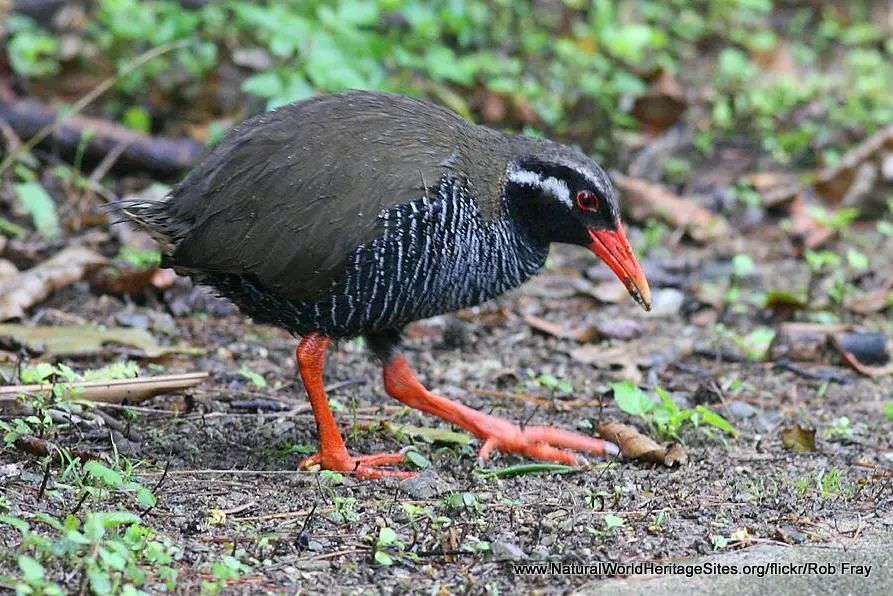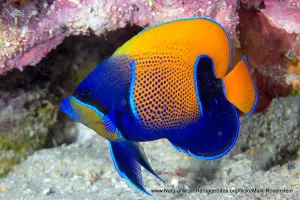EXPLORE the Amami-Oshima, Tokunoshima, Northern Okinawa and Iriomote Islands with this slideshow, check the location map and get all the facts and information below.
For slideshow description see right or scroll down (mobile). Click to view slideshow
Location and Values: The Amami-Oshima, Tokunoshima, Northern Okinawa and Iriomote Islands are located along the long arc of small islands that stretches southward from Japan’s principal islands towards Taiwan. These islands are widely separated, spanning a distance of about 650km between the most northerly (Amami-Oshima) and southerly island in the site (Iriomote). The site comprises five separate components, protecting subtropical rainforests in the mountains and hills of these four islands.
The areas support a very rich flora and fauna, including many endemic and threatened species. The flora includes at least 1,819 vascular plant species of which 188 (10%) are endemic, while rates of endemism amongst terrestrial mammals (62% of 21 species) and reptiles (64% of 36 species) are even higher. The list of threatened species includes the Amami rabbit (the only species in its genus with no close relatives anywhere in the world), three species of spiny rat (belonging to an endemic genus), the flightless Okinawa rail and the Iriomote cat (with a total population of about 100 cats, only on Iriomote Island).
Conservation Status and Prospects. According to IUCN’s evaluation of the nomination for the Amami-Oshima, Tokunoshima, Northern Okinawa and Iriomote Islands there are a number of significant threats to the site. These include (1) the presence of many invasive alien species, including feral cats, Indian mongoose, cane toads and invasive plants such as ‘Mile-a-minute’ and ‘creeping daisy’, (2)illegal collection of plants and animals including orchids, ginger, freshwater turtles and other reptiles, amphibians and beetles (3) a high incidence of road kill affecting species such as Amami rabbit, Okinawa rail and Iriomote cat, (4) impacts of a growing number of tourists to the site, (5) the presence of hard infrastructure along the rivers on the islands, used to manage water use and flood protection, which is impacting river ecology and threatening some of the 267 species of freshwater fish and other aquatic fauna, and (6)activities in the buffer zones, including forestry operations involving clear-felling of trees. The IUCN evaluation acknowledges that measures are being put in place to address these threats, and emphasizes the importance of monitoring the effectiveness of these measures to inform an adaptive management response.
Links:
Google Earth
Official UNESCO Site Details
IUCN Conservation Outlook
UNEP-WCMC Site Description
Birdlife IBA
Slideshow description
The slideshow ‘tells the story’ of the Amami-Oshima, Tokunoshima, Northern Okinawa and Iriomote Islands with a portfolio of photos that illustrate the site’s landscape features and some of the typical plants and animals. It starts with landscape views of the forested islands in the north, and some of the important endemic species that inhabit them, including Ishikawa’s frog, Kuroiwa’s ground gecko, Amami rabbit, Okinawa rail and Ryukyu black-breasted leaf turtle. The second part of the slideshow features Iriomote Island, the largest and most southerly component of the site. Here there are significant coastal, freshwater, mangrove and subtropical rainforest habitats and some spectacular small waterfalls. A photo of the endemic Iriomote cat is included.
The following Flickr photographers and other sources are acknowledged with thanks for their contributions to this slideshow (as credited in the watermark of each photo): Leonardo Stockli, Nishimoto Daikei, Richard Collier, Shindo J.P, Tony Kliemann, herebunny.com, Our Breathing Planet, Akiko Horiuchi, Andrea Noti, Kaeko, Naoki Tsuneyasu, Satoru Kobashashi, Takaaki Yamawaki, Tim&Elisa, Bob Hawley, Rob Fray and Patrick Randall.
Factfile
Website Category:
Islands
Area: 427 km2
Recommended Inscription: 2021
UNESCO Criteria (Proposed):
- Natural habitat for biodiversity (x);
- Significant number of rare, endemic and/or endangered species (x)




